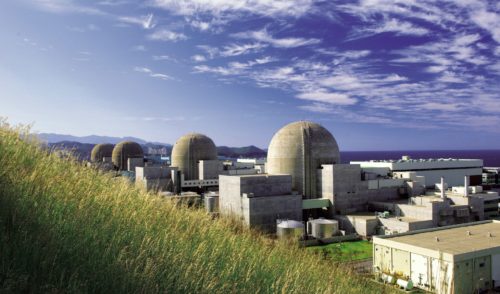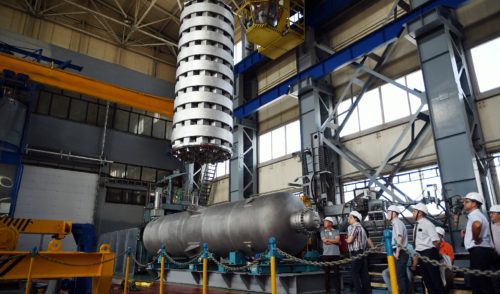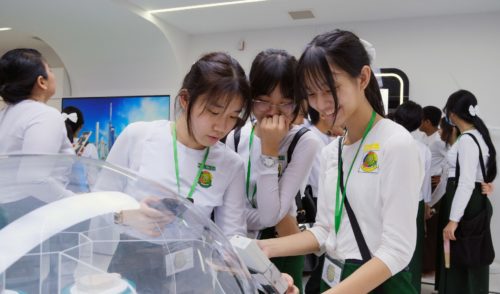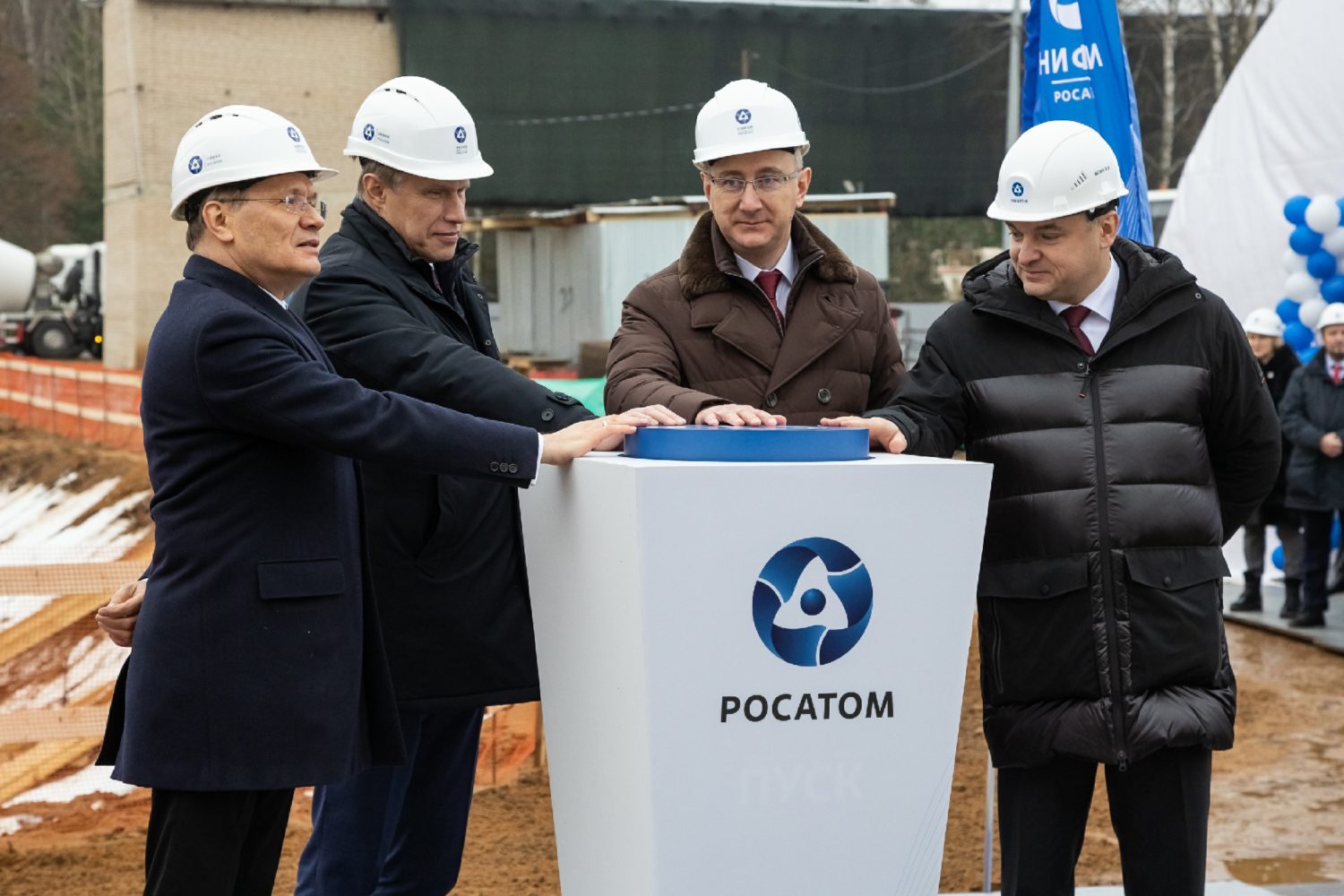
Isotopes Become Radiopharmaceuticals
back to contentsOn January 20, construction started to build Europe’s largest radiopharmaceuticals factory. The new facility will be able to multiply Russia’s production of highly sought-after substances for diagnostics and treatment of cardiovascular and neurodegenerative diseases and oncologies.
The factory is being built on the premises of Karpov Research Institute of Physics and Chemistry (NIFKhI, part of Rosatom) in Obninsk. As one of Russia’s largest manufacturers of radiopharmaceuticals, NIFKhI is engaged in fundamental research and development of a wide range of diagnostic and therapeutic radiopharmaceuticals and improves radiochemical production methods and processes.
The new factory is planned to be commissioned as soon as 2025. Production processes will be fully compliant with the good manufacturing practice (GMP), an international quality control system for the production of medicines. “We do a lot of construction work around the world, and we will use our best construction technology here. Beyond that, we have experience in building nuclear medicine centers. As an example, last year we built such a facility at the Dmitry Rogachev Center of Pediatric Hematology, Oncology and Immunology,” Rosatom Director General Alexey Likhachev said when speaking at the factory foundation concreting.
Having 21 production lines, the factory will produce dozens of new radiopharmaceuticals and active pharmaceutical substances, Rosatom plans. They will include well-known and much-demanded substances containing isotopes of iodine‑131, samarium‑153, and molybdenum‑99. The factory will also produce active radiopharmaceutical substances and medicines based on lutetium‑177, actinium‑225, radium‑223 and other isotopes.
The Russian nuclear corporation was among the first in the world to set up commercial production of ytterbium‑176 and lutetium‑176, which are used as source materials for lutetium‑177. Its employees also have developed and put into practice a number of production methods for lutetium‑177. It is this isotope that is contained in most of advanced targeted radiopharmaceuticals for the treatment of inoperable tumors and metastases. Lutetium‑177 is currently produced at two of Rosatom subsidiaries. Globally, about 30 % of radiopharmaceuticals containing this isotope are produced from raw materials of Russian origin. Actinium‑225 is another isotope that, like lutetium‑177, is considered the most promising for targeted therapy of inoperable metastatic cancers, such as prostate cancer.
In general, radiopharmaceuticals are used to treat neuroendocrine tumors, myeloid disorders, internal organ cancers, bone cancers, brain tumors, solid tumors, neuroblastoma, non-Hodgkin’s lymphoma, etc.
“Today, the Russian nuclear corporation is one of the world leaders in the production of medical isotopes. But isotopes are only source material for medicines. We also produce about 10 of them, but their quantity should be much larger. This is the goal we want to achieve with the new factory in Obninsk,” Alexey Likhachev said.
In addition to supplying products to the Russian market, Rosatom regularly ships over 20 globally sought-after medical radionuclides to more than twenty countries, and manufactures a number of ready-to-use medicines and radioisotope generators. In particular, Rosatom signed medium-term contracts for the supply of lutetium‑177 and actinium‑225 to Europe, Latin America and Japan in 2021. Overall, medical radioisotopes produced by Rosatom enable about 1 million diagnostic and therapeutic procedures in Russia and 1.5 million worldwide every year. In terms of certain isotopes, the Russian nuclear corporation accounts for 20 % to 30 % and even up to 100 % of total deliveries on the global scale.
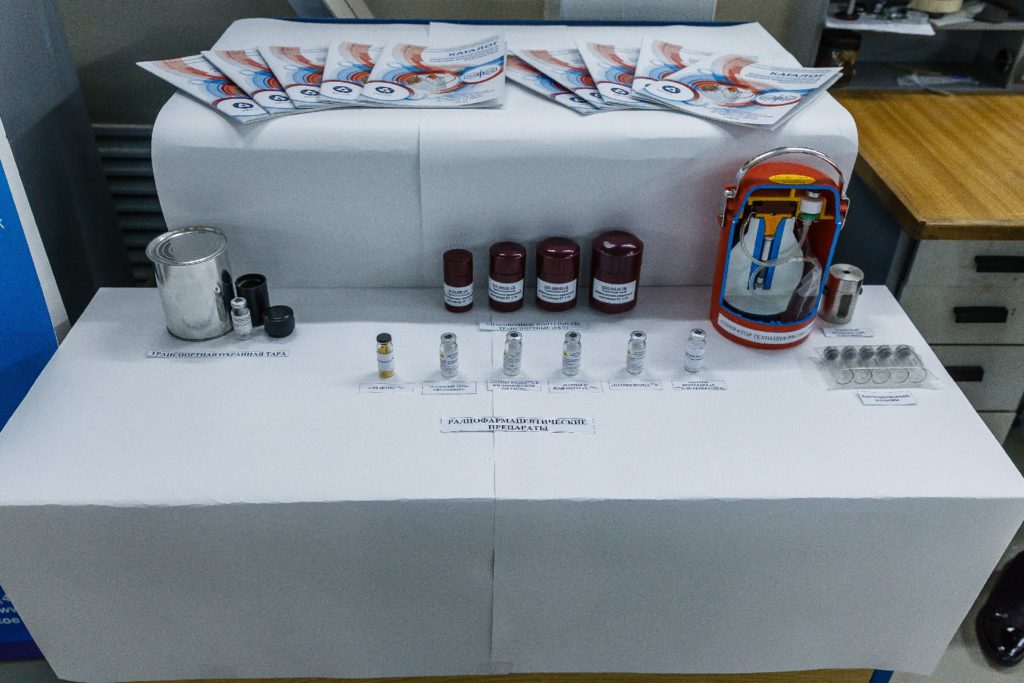
Rosatom has signed a cooperation agreement with the Russian Federal Medical and Biological Agency (FMBA) with an intention to jointly develop radiopharmaceutical production methods and quality control procedures. Joint research programs will be aimed to confirm the efficacy, safety and quality of nuclear medicines. The agreement also provides for preclinical and clinical trials at FMBA’s research and therapeutic facilities.
How diagnostic radiopharmaceuticals work (Source: NIFKhI data)
Diagnostic procedures are based on the property of isotopes to be selectively accumulated in certain organs and tissues. Radiation emitted by attached radionuclides helps trace and localize the substance in the body with high precision.
- Sodium pertechnetate containing technetium‑99m accumulates in the thyroid gland but does not affect the synthesis of thyroid hormones. For this reason, it is used in thyroid diagnostic procedures in patients taking antithyroid drugs. Besides, the blood clearance rate of sodium pertechnetate allows estimating blood flow dynamics in different organs (brain, heart, etc.).
- Due to the selective accumulation of iodine‑131 in the thyroid gland, sodium iodide containing this isotope allows determining the functional state of the thyroid gland and visualizing it during radiometry and scanning.
- Sodium o-iodohippurate labeled with iodine‑131 is rapidly excreted from the circulating blood by the kidneys. The degree and time of accumulation and excretion by the kidneys are used to determine their functional state.
- Ureacaps, a medicine containing carbon‑14, is used to detect Helicobacter pylori bacteria in the human body with a breath test. This diagnostic method is based on the indirect measurement of urease, an enzyme secreted by the bacteria. Since urease is not normally present in human tissues and other urease-producing bacteria do not colonize the human stomach, the presence of urease in the stomach indicates the presence of Helicobacter pylori.


